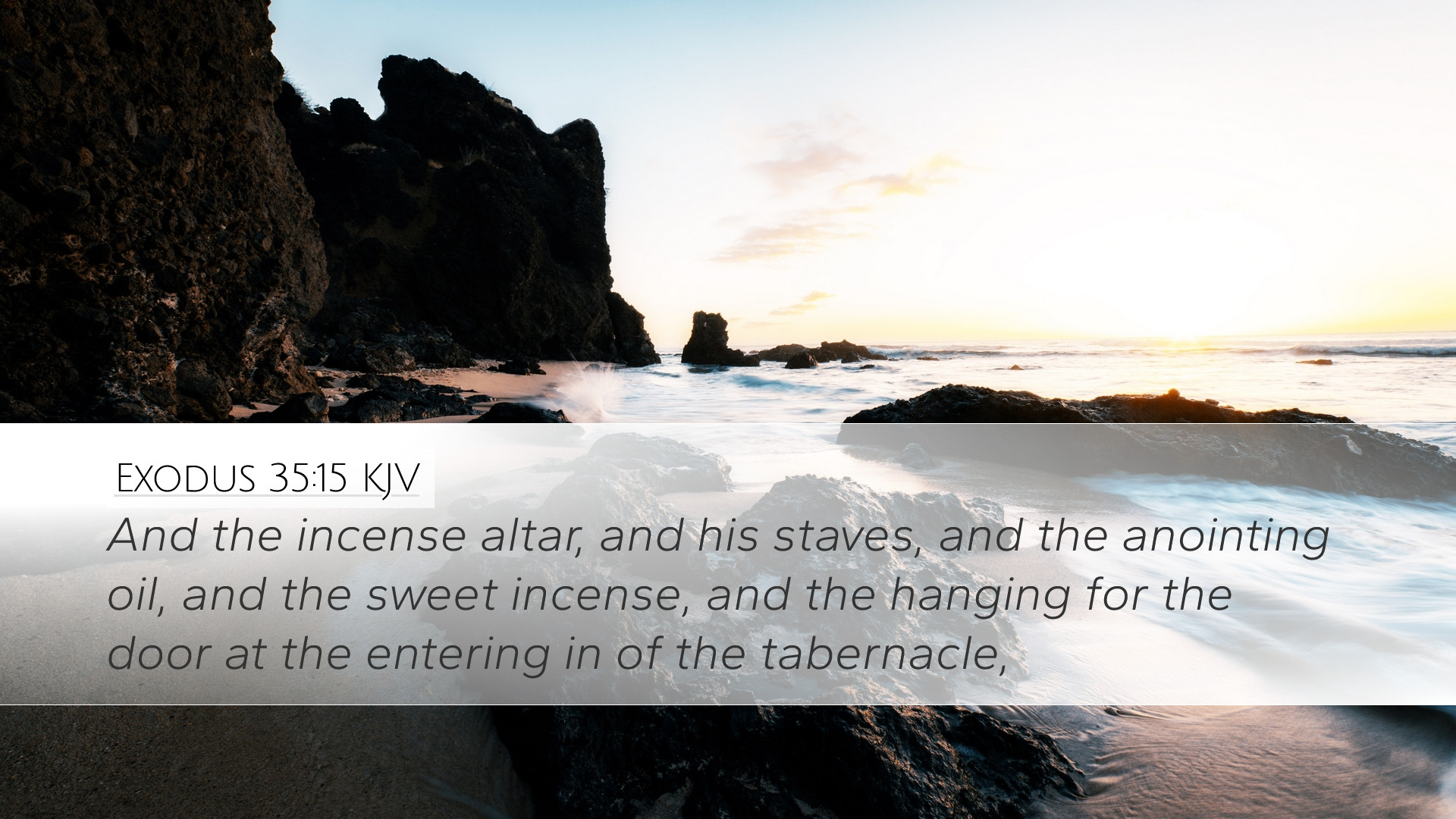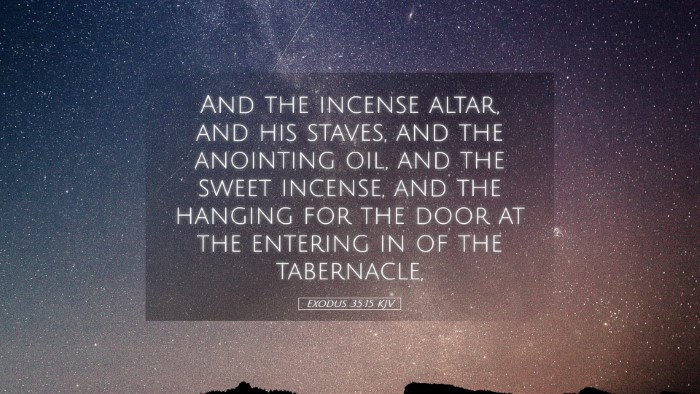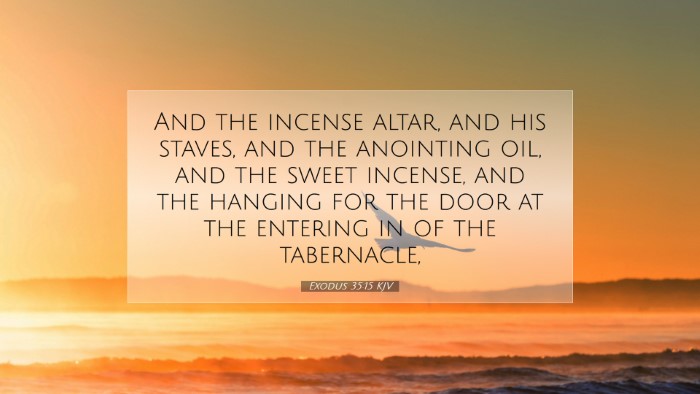Commentary on Exodus 35:15
Exodus 35:15 reads: "The incense altar, the altar of incense, and the oil for the light, and the sweet incense for the holy place, and the stones for the ephod, and the stones for the breastplate."
Introduction
This verse captures a significant aspect of worship in ancient Israel centered around the tabernacle. It emphasizes the materials required for the construction of sacred items, highlighting God's intention in establishing a place for His worship and presence among His people. The details in Exodus are not merely historical; they possess profound theological significance that speaks to the nature of divine worship, holiness, and preparation.
Insights from Public Domain Commentaries
Matthew Henry's Commentary
Recognition of Divine Order: Matthews Henry emphasizes that the careful specification of materials signifies God's order in worship. Each item mentioned holds a particular purpose in the ceremonial system established for Israel, showcasing the divine necessity for precision in worship.
Spiritual Symbolism: The incense altar symbolizes the prayers of the saints rising before God, portraying the essential nature of communication with the Divine. The sweet incense denotes the acceptability of these prayers, reflecting a heart aligned with God's will.
Albert Barnes' Notes on the Bible
Significance of the Altar: Albert Barnes elaborates on the altar of incense as pivotal in Old Testament worship, located in the Holy Place, just before the veil leading to the Holy of Holies. This positioning reflects the importance of intercession and the priestly role in approaching God on behalf of the people.
Material Wealth for Divine Work: Barnes also highlights the materials listed in the verse, noting that they represent the willing contributions of the people. The act of giving for the construction of the tabernacle embodies a communal commitment to worship and service to God.
Adam Clarke's Commentary
Spiritual Preparation: Adam Clarke points out the necessity of preparation in all aspects of worship. The specific items required indicate that worship is not haphazard but rather demands careful consideration and reverent intent.
The Role of the Ephod and Breastplate: Clarke remarks on the significance of the stones for the ephod and breastplate, which represent the tribes of Israel. This underscores the idea that as God's people come together in worship, their collective identity reflects God's covenant faithfulness toward them.
Theological Implications
Worship and Holiness: The detailed instructions for creating spaces of worship highlight the holiness of God. Worshippers cannot approach God on their own terms; they must come according to His revealed will. This notion translates into Christian thought as well, suggesting that Christ Himself is the ultimate fulfillment of all worship requirements.
Community and Contribution: The involvement of the community in providing materials for the tabernacle reflects a model of active participation in worship. This communal aspect encourages modern believers to contribute their gifts, resources, and time toward the work of the church.
Practical Applications
- Attention to Detail: As pastors and leaders, we are reminded of the need for diligence and consideration in our preparations for worship services, ensuring that every aspect reflects God's holiness and order.
- Encouraging Generosity: The response of the Israelites to give willingly for the construction of the tabernacle serves as an illustration of how congregations should be encouraged to invest in the mission of the church through their resources.
- Focused Worship: Just as the altar of incense played a critical role in worship, we should ensure that prayer remains central to our gatherings, fostering an environment where believers can reach out to God collectively.
- Representation of the Community: Identifying with the tribes of Israel through the stones on the ephod, we must remember our corporate identity in Christ, advocating for unity and love within the body of believers.
Conclusion
The insights drawn from Exodus 35:15 provide a rich tapestry of meaning that extends well beyond the historical and into the realm of spiritual practice and community life. It reminds us of the foundational aspects of worship: holiness, preparation, contribution, and intercession. As we reflect on these truths, let us commit ourselves to worship in spirit and truth, with hearts attuned to God's presence and service to His people.


